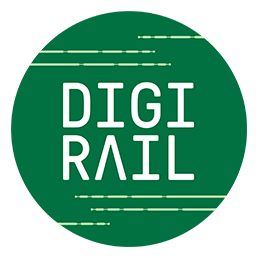The Digirail operating concept is a key tool in building a railway system for a new era. It enables the implementation of an efficient, safe and uniform system nationally and as part of the European railway network.
The Finnish railway system is gradually transitioning to using the European Rail Traffic Management System (ERTMS), a modern radio-based ETCS (European Train Control System) and automatic train operation (ATO). The cornerstone of Digirail’s implementation phase is an operating concept that creates a unified framework for the operation of future railways.
The operating concept is basically a document that explains how the new system fits into the bigger railway system and how it interacts with other parts of the system. It steers the development of system requirements and guidelines, ensuring that technical implementation supports the operational objectives. A consistent high-level document enables parallel development of different parts of the system without each sub-area developer having to master the details of the entire system.
“The risk management process and operating methods are currently being defined. Ensuring the overall safety of the system is important, and therefore risk management must be part of every stage of the work, from preliminary studies to the final system requirements,” emphasises Ida Ravimo, head of the work entity on ETCS and safety equipment.
The operating concept also supports the planning of future operating and maintenance organisations and helps identify required changes. It can be used to optimise operational efficiency throughout the entire system.
Technical reportys provide feasible solutions
Close cooperation between the operating concept and technical reports is crucial: the operating concept defines how the system is to be operated, and the technical reports provide feasible solutions for this. On the other hand, if technical reports reveal implementation requirements that deviate from the operating concept, the document will be updated and the impacts assessed. This will ensure that the operational and technical development of the system go hand in hand.
“Work on the technical studies began during the first half of the year. Currently, we are working on organising the team, conducting a few preliminary studies, defining the topics for future studies and their interdependencies, and refining the schedule in line with the operating concept,” Ravimo explains.
